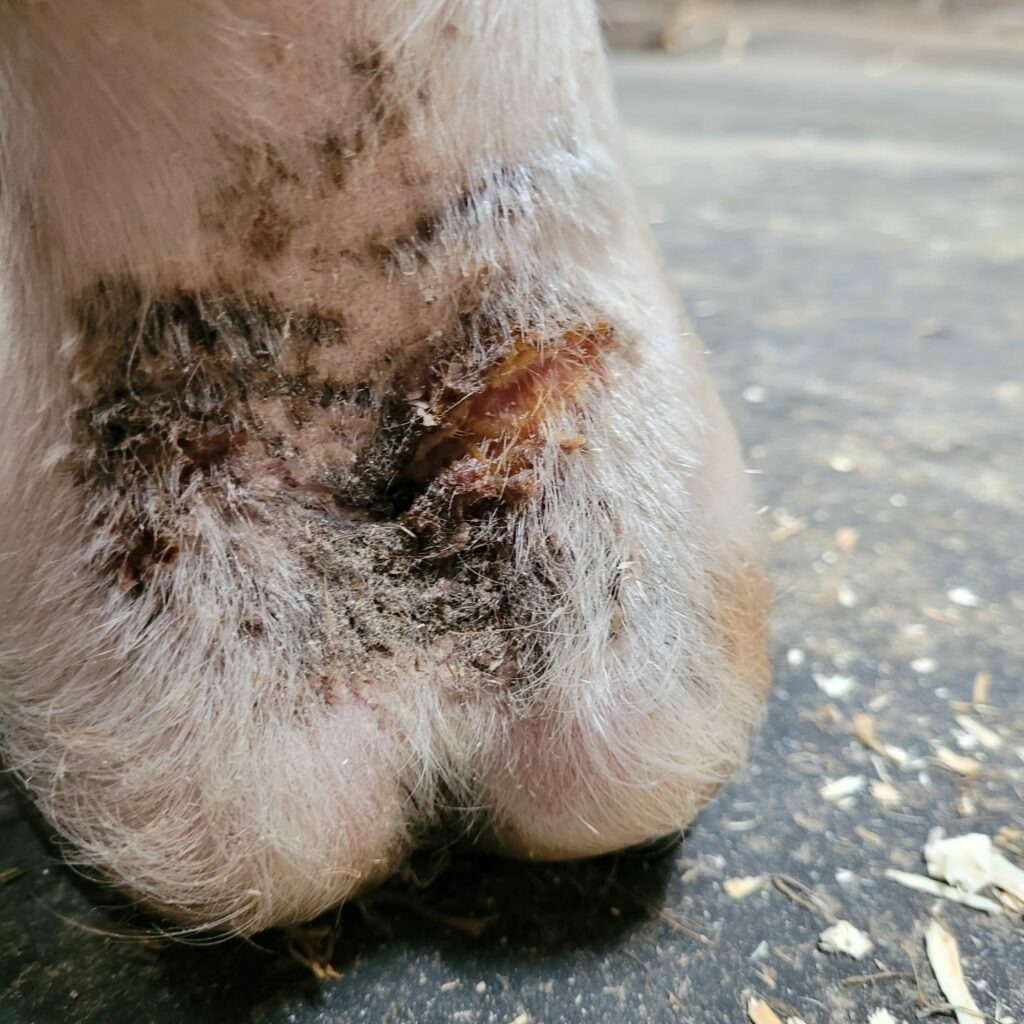What is Rain Scald and Mud Fever?
Horses and ponies who live outdoors or exercise in muddy settings are more likely to develop the skin disorders, rain scald and mud fever. The back and flanks are most commonly affected by rain scald (also known as rain rot), whereas the legs are most commonly affected by mud fever (also known as pastern dermatitis, greasy heal, or dew poisoning). Dermatophilus congolensis is the bacteria that causes these various kinds of infections1

What is the cause?
The precise natural cause of D.congolensis is unknown, while some soil types might serve as a temporary habitat. Some horses may be chronic carriers of the infection, and the infection may be triggered when certain environmental circumstances are favorable1.
A horse’s susceptibility to this bacteria will rise with skin breakdown and excessive wetness, therefore rainfall, soil type, and the existence of biting insects, arthropods, prickly plants, and maceration may all play a role1.
What are the symptoms?
- The skin will be heated, inflamed, and covered in patches of scabs of varied sizes, many of which have spikes of rough hair similar to “paintbrush bristles” attached. These scabs can be uncomfortable to remove and could reveal yellow pus1.
- Pink and white complexion tones are frequently more prone1.
- In the case of mud fever, scabs around the knee, fetlock, heels, and coronary band can result in lameness and, sometimes in severe skin infection, swelling can occur1.
- Rare itchiness1.
Diagnosis
The diagnosis is typically made by identifying the scabs and the basic symptoms mentioned above, but in cases where there is doubt, a sample can be collected for culture by a vet1.
Treatment
It is always recommended to seek medical advice from a vet to ensure effective treatment for the correct infection.
- It has been observed, that an aqueous-based ointment can be used to remove mud fever scabs while also providing comfort for the horse1.
- It could be essential to trim the damaged areas in more serious cases1. Following the removal of the scabs, the affected regions should be cleaned with appropriately diluted antibacterial treatments1.
- Antifungal shampoos may be necessary in specific circumstances1.
- Between washings, the skin should be completely dried using rugs or dressings made to absorb moisture away from the horse’s skin1.
- Recovery may take several weeks1.
Management
- Use well-fitting, high-quality turnout rugs to maintain the cleanliness and dryness of the horse. Maintaining leg hair short would also be beneficial1.
- Following careful evaluation of the diet, workout routine, and boredom distraction, stalling may be encouraged. Leg wraps intended to avoid mud fever may be worn as an alternative to 24/7 stabling1.
- Barrier creams like petroleum jelly can be used with caution1.
- The region around gates, which is frequently the muddiest, can be covered with hard standing1.
References
- Atkins, L. (2013) More than scraping the surface: Equine skin condition challenges, Vet Times. Available at: https://www.vettimes.co.uk/article/more-than-scraping-the-surface-equine-skin-condition-challenges/ (Accessed: December 12, 2022).
